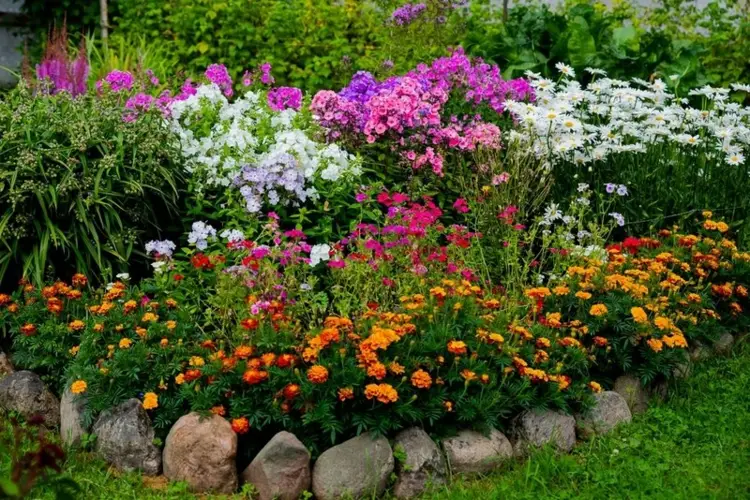A common fall gardening chore is cutting back the perennials. This is not only to stimulate flowering the next year. From a purely visual point of view, the garden looks tidier and neater in winter. But there are also good reasons why you should not cut back perennials. What are they? And does this apply to all types of perennials?
Insects, but also some perennials, benefit from skipping the pruning completely in the old season or at least delaying it for as long as possible.
Why You Should Not Cut Back Perennials: Do Not Remove Spent Flowers Immediately
In spring or summer you can boost a second flowering phase by cutting off withered flowers. Of course, this is good reason to include this care measure in the routine. But in the fall, this is no longer necessary – there will be no more flowering now anyway, due to falling temperatures. And now that the plants will gradually die, many do what seems most logical: the dry parts of the plant are removed directly.
But Why You Should Not Cut Back Perennials?
- On the one hand, the withered perennials provide food for many insects.
- Tall perennials in particular are an important shelter in winter.
- The dead plant parts on the surface also provide some winter protection for the roots.
- Remaining seed pods are welcome food for birds.
What Compromise Can You Make to Do Justice to Everything?
What can you do for insects and birds?
- Combine your perennials smartly. There are many late-blooming varieties that you can incorporate into your perennial beds. In this way, insects will continue to receive sufficient food for a long time, while those that bloom earlier can be cut without any problems.
- You can also deliberately not cut perennials if they form pretty seed heads, for example. Then they also have a decorative effect in winter and do not spoil the well-groomed appearance of your garden beds.
- Flower seeds are a good source of food for birds.
- Tall perennials such as sedum or vernonia look pretty and provide shelter for various insects. The useful lacewing, for example, benefits from such stems. And the popular ladybugs also hide in it from the cold.
Try planting a good variety of perennials in your garden that will provide flowering plants or seeds for birds and insects from early spring through late fall.
Also read: Perennial Flowers That Bloom All Year: Enjoy A Permanent Rainbow of Florets!
Which Perennials Not To Cut Back: These Still Look Beautiful in Winter
Evergreen species are, of course, a good choice, but not only. species will not spoil the look of your garden even during the winter season, but will add a decorative touch to the exterior with the help of beautiful foliage or seed heads:
- Bergenia (Bergenia), gets red leaves
- Jerusalem sage (Phlomis)
- Fountain Grass (Pennisetum alopecuroides)
- Goat’s Beard (Aruncus dioicus)
- Barren strawberry (Waldsteinia fragarioides)
- Tall Stonecrop (Sedum telephium)
- Chinese lantern (Physalis alkekengi)
- Purple Coneflower (Echinacea purpurea)
- Yarrow (Achillea millefolium)
- Evergreen Candytuft (Iberis sempervirens)
- Cranesbill (Geranium), some species
- Coneflower (Echinacea)
Conclusion: Cut Back Perennials or Better Leave Them?
However, it is also a fact that when you cut back perennials in the fall, or at least some of them, has some advantages:
- Perennials that are shortened early reduce the risk of accidentally cutting off new shoots later and thus disrupting flowering.
- The plants can sprout more easily in spring.
- The flowering will be more abundant in the coming year if you cut back perennials, than if they were not pruned.
- The fall pruning of dry plants is easier than when they get soft and mushy.
- The garden looks neater.
So, in the end, it is up to you whether to cut back perennials now in the fall or wait until spring. Both methods have their advantages and disadvantages. If you can’t make up your mind, the best thing to do is try to find the golden mean and create a perennial border that offers a great deal of variety, with flowering phases throughout the season. At the same time, it is also advantageous to have species that are visually appealing even in winter, and thus do not spoil the look of the garden.







